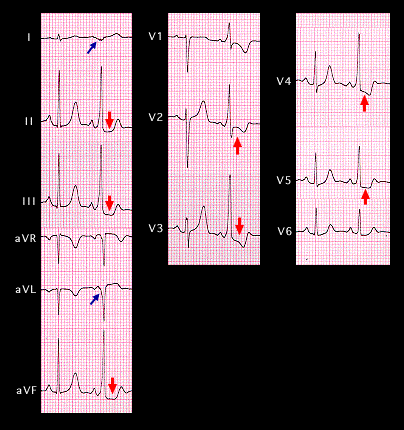
The changes in the sequence of ventricular depolarization caused by ventricular pre-excitation will be associated with secondary changes in the sequence of repolarization. These may cause changes in the ST segment and T wave that simulate those associated with ischemia. This ECG, discussed before in chapter 3 (see page 3.3.11) illustrates alternating normal and pre-excited QRS complexes. The first is normal and the second is pre-excited via a left lateral bypass tract. Note, in the pre-excited beats, not only the negative delta waves in leads I and aVL (blue arrows) which simulate those of a lateral wall infarction, but also the ST segment depression and T wave changes (red arrows) in leads II, III, aVF, V2-V5. These ST and T wave changes, while similar to changes associated with sub-endocardial (or non-transmural) ischemia, are secondary to the changes in depolarization caused by the pre-excitation. The ST segments and T waves in the normally conducted beats are normal.
